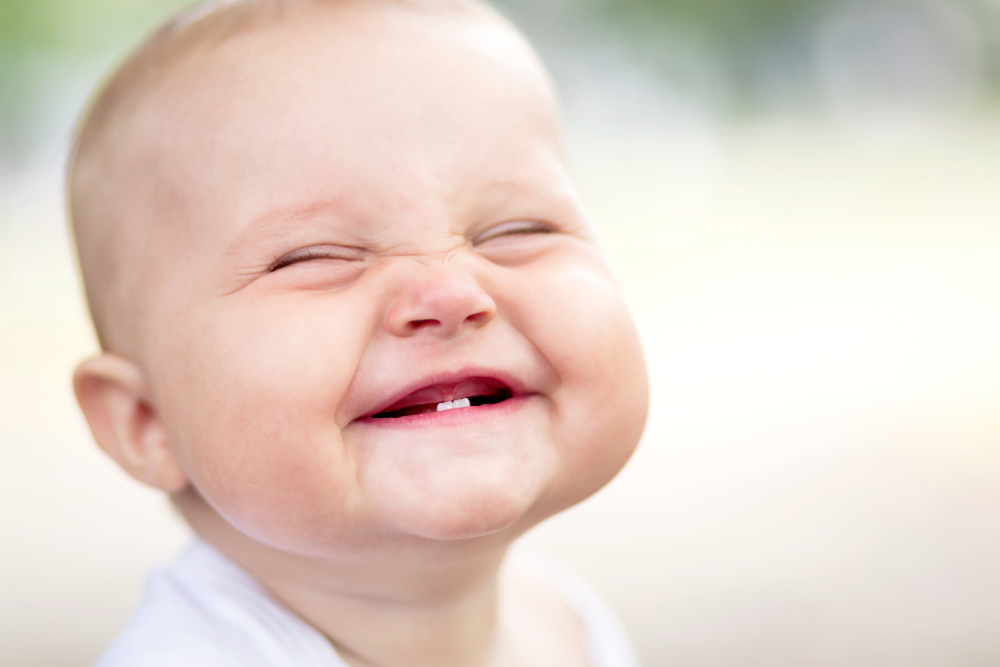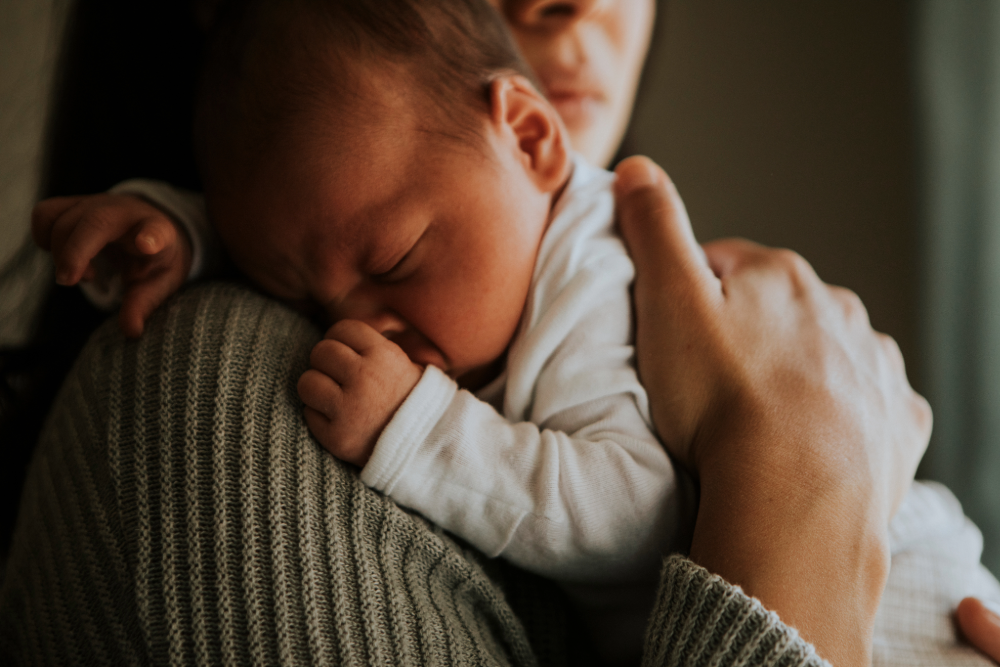
Carrying babies while teething – closeness that comforts
Teething – a challenge for baby and parents
When the first tooth erupts, it's not only a developmental milestone, but for many babies, it's also associated with discomfort, pain, and a lot of crying. While some children go through teething almost unnoticed, others suffer greatly—with sleepless nights, whining, and a constant need for closeness. During such times, carrying your baby can be a valuable anchor. It provides security, relieves stress, and promotes emotional balance—for both the child and the parents.
Why is wearing a baby so helpful when teething?
When babies are teething, they experience a combination of pain, restlessness, and a need for security. Many babies seek increased physical contact during this phase – ideally around the clock. Carrying fulfills precisely this need for closeness and comfort in a particularly loving way.
The close physical contact while carrying helps reduce stress hormones in the baby's body and releases the "cuddle hormone" oxytocin. This has a calming, pain-relieving, and strengthening effect on the bond. At the same time, many parents feel less burdened in everyday life: Instead of holding their baby for hours, they can carry them safely in a sling or carrier – while still doing small tasks, getting some fresh air, or simply staying active.
The benefits of carrying during teething
Carrying not only has emotional benefits, but also brings very practical advantages when your baby is teething:
1. Pain relief through closeness
Physical closeness is soothing – it's not just a feeling, it's also scientifically proven. Body warmth, a familiar heartbeat, and movement ensure babies feel safe and subjectively less painful.
2. A more upright posture relieves teething
Many babies also experience slight pressure in the jaw and ear area when teething. Carrying your baby upright can help reduce this pressure—especially if your baby has a cold or is also struggling with mucus buildup.
3. Better sleep aid
When teething, many babies have trouble falling asleep or wake up more often. The gentle movement of carrying, combined with closeness and warmth, promotes falling asleep and often leads to longer, more restful naps.
4. Reduced sensory overload
When babies are in pain, they react more sensitively to noise and visual stimuli. Carried in a sling or ergonomic carrier, they are protected from external influences—a soothing retreat in the midst of everyday life.
Which carrying system is suitable for teething?
In principle, you can carry your baby comfortably in any ergonomic baby carrier or sling, even during the teething phase. Carrier systems that allow for a lot of flexibility and closeness are particularly recommended.
A stretchy sling is especially suitable in the first few months of life, when the baby needs a lot of skin-to-skin contact. It adapts softly to the body, which is especially comfortable when the baby is restless or sensitive.
For older babies who are heavier or need more stability, woven wraps or a full-buckle carrier (with buckles) are often more comfortable. It's important that the baby sits in an anatomically correct spread-squat position and the weight is evenly distributed—this also protects your back.
How to wear correctly when your baby is teething
If you want to carry your baby while teething, make sure they're positioned in a cozy yet stable position. Carry your baby as close to your body as possible—this way, they'll feel your warmth and feel safe. Their face should always be visible so you can respond to their signals at any time.
Pay attention to body language, too: Some babies prefer to be held more during this phase, while others need short breaks in your arms, in bed, or on the play mat. You'll quickly notice what works for your child.
A particularly popular position for teething is tummy-to-tummy carrying. It provides maximum closeness, is also ideal for falling asleep, and allows you to gently stroke your baby's back—which is soothing for many children.
Carrying and teething pain – how are they related?
Tooth eruption is not only a mechanical process, but also an immunological one. Many babies exhibit increased saliva production, a mild fever, sore mouth areas, or even red cheeks during this phase. These symptoms can be very distressing—especially when they occur simultaneously.
Of course, carrying can't cure these symptoms, but it does create a safe space where your baby can relax. The comfort you provide through your body often provides more relief than medication or teething rings. However, you can provide support with cooling teething rings, gentle gum massage, or natural teething aids—ideally in combination with carrying.
Wearing at night: Help with restless sleep
Nights during teething are particularly challenging for many families. Babies often wake up more often, are fussy, or want to breastfeed for hours. Here, too, babywearing can be a real blessing.
A sling or baby carrier can help you gently rock your baby to sleep without having to sit for hours. Some parents also use a springy baby hammock during this phase or, if the baby is a little older, carry the baby on their back. It's important that you also get some rest during these nights – babywearing can help you bring more routine and peace back into your sleep routine.
Tips for parents – Don’t forget self-care
When your baby is teething and needs a lot of closeness, you as a parent are particularly challenged. This makes it all the more important to take care of yourself. Carrying your baby can help you stay mobile in everyday life, keep both hands free—and still be there for your child.
Pay attention to ergonomic posture, seek support from a babywearing consultant if needed, and don't be afraid to accept help. Short breaks, fresh air, and the knowledge that this phase will pass will help you get through this intense time.
Conclusion: Carrying is comfort during teething
Teething is one of the most challenging phases of the first year of life – for children and parents alike. Carrying a baby during this time can be a true gift: It provides closeness, relieves pain, calms the nervous system, and strengthens emotional bonds.
Whether in a sling during the day or at night while falling asleep – being carried gives babies exactly what they need most when teething: comfort and security.


